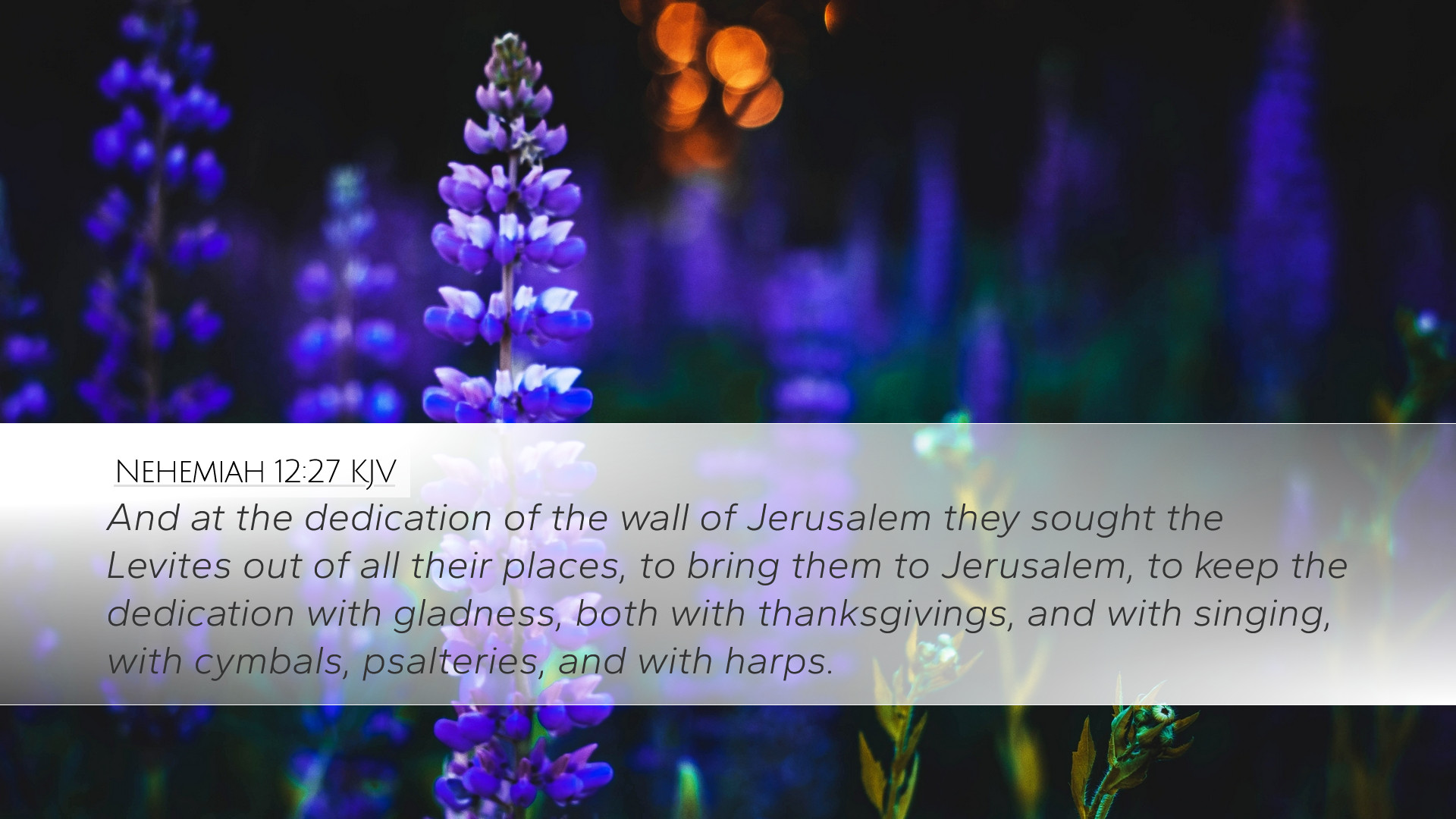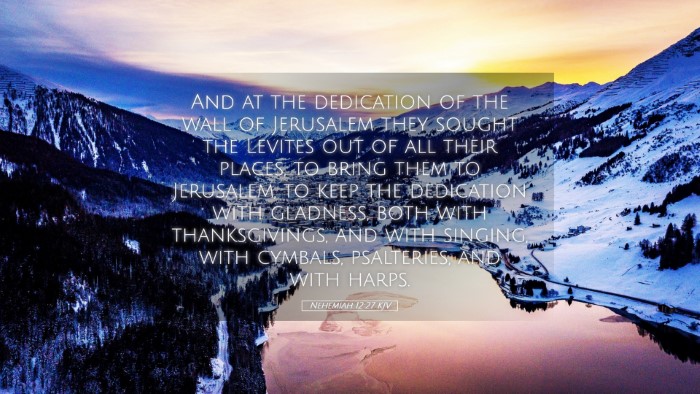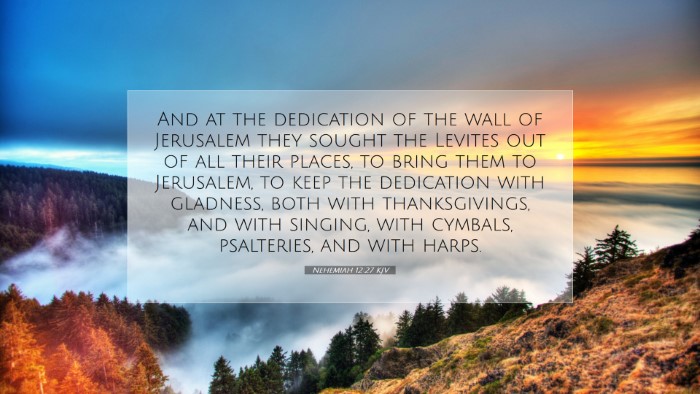Bible Commentary on Nehemiah 12:27
Verse Text: "And at the dedication of the wall of Jerusalem they sought the Levites out of all their places to bring them to Jerusalem, to keep the dedication with gladness, both with thanksgivings, and with singing, with cymbals and with harps and with psalteries."
Introduction
The verse Nehemiah 12:27 marks a significant moment in the history of Jerusalem and of the Jewish people. After the wall's reconstruction, the dedication ceremony reflects not only the physical restoration of the city but also a spiritual renewal among the people. This commentary synthesizes insights from various public domain commentaries to explore the cultural, liturgical, and theological implications of this event.
Contextual Background
The rebuilding of Jerusalem's wall, led by Nehemiah, occurred under intense opposition and was completed in record time. This effort symbolized the restoration of Jewish identity and worship after the Babylonian exile.
- Historical Significance: Nehemiah's leadership marked a turning point for the Israelites, who were reacquiring sovereignty and a sense of community.
- Cultural Revival: The ceremony symbolizes not only a physical but also a spiritual rejuvenation, emphasizing worship's role in communal life.
- The Role of the Levites: The selection of Levites to lead the dedication indicates their centrality in worship and community life.
Insights from Commentaries
Matthew Henry's Commentary
Matthew Henry emphasizes the significance of joy in worship, noting that the dedication was not just a formal ceremony but an occasion filled with spiritual exuberance. He suggests that the gathering of the Levites reflects the collective effort to acknowledge God's provision in rebuilding the wall.
- Gladness in Worship: Henry highlights that the occasion was marked by gladness, which indicates the proper atmosphere for worship—a deep joy stemming from God's faithfulness.
- Thanksgiving: The expression of gratitude is fundamental in Henry's exposition, reminding believers of the importance of recognizing God's hand in their lives.
Albert Barnes' Notes on the Bible
Albert Barnes elaborates on the logistics of the dedication ceremony, noting the meticulous planning involved in ensuring that all Levites were present to honor God through worship.
- Gathering of the Levites: This showcases the communal aspects of worship where the leaders play a pivotal role in guiding the people toward encountering God.
- Musical Involvement: Barnes notes the mention of musical instruments, emphasizing the integral role of music in enhancing worship and creating an atmosphere of reverence and joy.
Adam Clarke's Commentary
Adam Clarke gives an extensive historical perspective, reminding readers of the challenges faced during the rebuilding. He insightfully correlates the physical elements of worship—music, instruments, and physical dedication—with spiritual renewal.
- The Symbolism of the Wall: Clarke interprets the wall as a barrier against evil and a symbol of security for worship, suggesting that the physical structure has profound spiritual implications.
- Participation in Worship: He reflects on how the Levites’ service was about more than music; it was about facilitating a return to rightful worship and guiding the people towards a closer relationship with God.
Theological Implications
The events described in Nehemiah 12:27 provide rich theological themes for reflection:
- Restoration: Just as the wall was physically restored, believers today may find parallels in their spiritual lives, where God seeks to rebuild and restore brokenness.
- Community Worship: The collective gathering emphasizes that faith is not merely individual but shared among the community, illustrating the importance of coming together to worship as one body.
- Gratitude and Joy in Worship: The elements of thanksgiving and joy remind contemporary Christians of the need to cultivate a spirit of praise in their lives, recognizing God's work in their midst.
Application for Today's Believers
The foundation of worship characteristic of the dedication ceremony encourages believers to manifest similar traits in contemporary contexts:
- Engaging in Community Worship: Participation in a local church is essential for spiritual health and the expression of faith through collective worship and service.
- Celebrating God's Faithfulness: Regularly engaging in acts of thanksgiving and remembrance of God's deeds fosters a rich spiritual life.
- Encouraging Joy: Joy should be a hallmark of worship. The manner in which believers engage with God should reflect the gladness of their hearts.
Conclusion
Nehemiah 12:27 is more than a historical account; it encapsulates themes of community, worship, and divine faithfulness. As congregations gather to celebrate milestones in their spiritual journeys, this passage serves as a reminder of the joy and gratitude that should fill their hearts as they worship together. Through the lens of public domain commentaries, we are invited to delve deeper into the richness of our faith and the role worship plays in both personal and communal settings.


